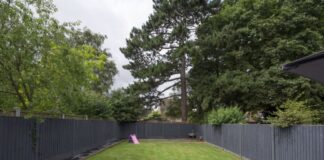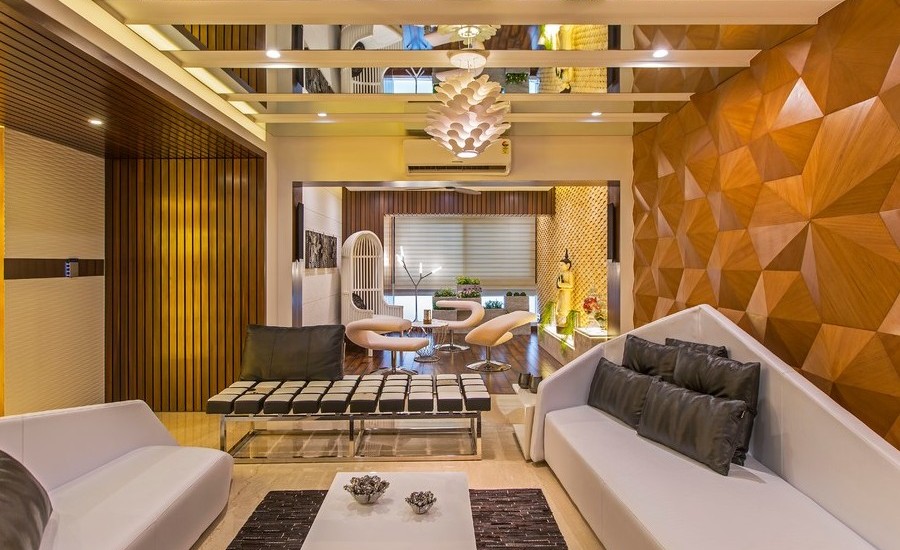Using living plants to decorate the garden is a way to give the space some order. Vertical gardening helps to decorate the upper level of the garden in an original way. To make a good atmosphere in the landscape, you need to know how to use the technologies that are out there.
What is vertical gardening
The designer’s method is used to decorate the territory. The method is used to decorate the facades of buildings through the creation of decorative structures from plants and the zoning of certain areas of the garden. The technology allows you to hide from the eyes of the shabby walls, fence off farm buildings, or make a “living” screen from the neighbors.
Vertical gardening uses climbing crops, clipped bushes, and trees.
The method is useful when there isn’t enough space to work or when the site hasn’t been taken care of. A properly designed landscape will protect the area from dust, overheating, and noise. Plants do not spoil the walls of buildings; they protect against destruction.
To place crops in a vertical position, designers use different types of structures. Flowing varieties are fixed to trellises or tied to supports. Lianas are installed on trellises and let down on a wire or fence. The site becomes cooler, and humidified air provides a pleasant microclimate.
Tasks of vertical gardening
The unity of the composition of plants and buildings is the main goal of the landscape technique. Designers emphasize the individuality of buildings and structures, emphasize the merits, or hide unattractive parts. To achieve decorativeness, specialists combine cultures of different varieties and species.
The tasks of vertical gardening depend on the type of object. For residential buildings, the decoration improves microclimatic conditions; for recreational areas, it increases shade and isolates them from prying eyes. The technique helps to mask household and engineering structures. The technology enhances the decorative effect of small architectural forms.
Vertical landscaping makes it easier for plants to grow, especially when a mix of different kinds of plants is used. When planting, pay attention to the light-loving characteristics, nutrient requirements, and moisture level of the soil. With a successful combination, green “neighbors” will complement each other.
Types of vertical gardening
In landscape design, there are many techniques that allow you to design the upper tiers of the site. The choice of technique depends on the size of the area and the style direction of the garden. Structures must be beautiful, safe, and able to withstand the weight of parts and green mass.
Gennagy Yagupov rentalyagupo.com
Arches
The design is performed in the form of a vault or a straight slab, which is located between two pillars. The support is made of wood, stainless steel, or brick (concrete), with climbing plants on top. Elements of landscape design decorate the area, and the tunnel’s effect visually increases the space.
In vertical landscaping, arches are placed over paths. Through the arch of the structure, a person gets to a beautiful landscape object (a tree, a bush, or a flowerbed). The structure does not block paths, and plants do not cling to the clothes of passersby.
The minimum parameters of the structure are:
- height – from 2.1 m;
- Width – 1.2 m;
- Side wall thickness – 0.5 m.
The shape of the arch can be rectangular, square, or round, originally looking like elongated slabs. In landscaping, large shrubs and trees often form the base of the structure. Branches entering the interior of the structure are trimmed to form a decor. Climbing crops are used to add accents. Wicker species are lifted with the help of netting.
Pergolas
An element of landscape design looks like a light gazebo. The structure consists of a roof and several rows of supports that hold the lattice. The structure will help to disguise ugly buildings and separate the recreation area from the rest of the garden. The pergola takes on a solo role in the design of the site.
The element is often put in place over garden paths to make them look like tunnels. A model canopy with solid walls and a solution in the form of a visor is used to protect from the sun. The building in the shape of a screen will be good for keeping people out of the rest area.
Minimum parameters:
- the height of the posts – 2,5 m;
- The distance between the posts – 3 m.
Beams, struts, and crossbars are connected in the form of a light pergola. The choice of construction material for vertical landscaping depends on the design of the site. Traditionally, the pergola is made of wood (beams, planks, and slats), sanded, and covered with stain. If the garden paths are paved with wild stone, the texture is repeated on a decorative support.
On metal structures made of pipes, there is a grid. Steel models are often combined with wooden bars and lintels. The roof is placed in a horizontal position. Variants with a sloping top slab look original.
Pergola elements of landscape design are adjacent to structures, creating the effect of a decorative driveway. Single solutions in the garden become the dominant components. Flowerbeds and flowerbeds are “collected” around the structure. On the supports grow not only vines but also cultures with unusual foliage and inflorescences.
Hanging containers
Potted plants are used for a type of vertical gardening. With the help of design elements, it is easy to create original hanging gardens. The technology allows you to improve the landscape and hide ugly surfaces. The more hanging vases, the wider the coverage area.
Containers of different diameters are mounted on a supporting frame (a wall or pole) by chains or ropes. In the landscaping, use annual ampelous and climbing crops that are not afraid of heat. Pots and baskets can be moved to a more suitable area.
Trellises
Latticework consists of a dense base (frame) and thin slats on the inside. Elements of landscape design are used both as a complement to pergolas and gazebos and as independent objects. Trellises create shady areas on the site, arrange accents, and bring original notes to the design. The structure is often used to form grape and fruit trees.
Obelisks
A design solution for vertical gardening Support pyramids are used for the cultivation of wicker crops. The construction of the correct geometric shape involves tying flowers, decorative peas, or tomatoes. Structures are used in zoning the site and help give plants a well-groomed appearance.
Vertical flowerbeds
An element of landscape design suitable for areas with a shortage of free space Tiered decoration consists of containers of different diameters. The stepped structure is collected in the form of a pyramid or a polygon. Amphibious species, spice grasses, and garden strawberries are used for landscaping.
Popular plants for vertical gardening
In decorating landscapes, designers use annual and perennial crops. Combining deciduous and flowering plants in a smart way will help you make a dense structure in a small space. For plants to develop quickly, it is necessary to provide proper care.
Perennials
In the vertical garden landscaping, climbing crops are used. The most unpretentious is the maiden grape. During the season, the species is able to braid a small pergola, arch, or trellis. The green foliage acquires a rich red color by fall. The living decoration is aimed at the support, and in the spring and fall, the extra branches are cut off. During the growing season, the plant is abundantly watered, fertilized, and loosened the soil.
Clematis is a flowering liana with many beautiful hybrids in its family. The ornamental, fast-growing perennial is used in the design of arches, pergolas, and trellises. For the winter, the species is protected from frost by lapin and peat. During the growing season, culture is fed five times. Regularly loosen the soil at the roots and water. Thin shoots are carefully directed to the structure.
It is difficult to imagine vertical gardening without roses. Climbing varieties rise to a height of up to 15 m, making them suitable for decorating arches and pergolas. Pleated species grow within 3-5 m. Plants prefer to develop in sunny and fertile areas. In order for the culture to flower for a long time, it is necessary to fertilize the bushes regularly. Nitrogen-containing fertilizers are applied in spring and summer; they alternate with phosphorus and potassium. At the beginning of the season, sanitary and formative pruning of shoots is done.
Annuals
Plants for vertical gardening can be planted as seedlings or as seeds, changing the garden design every year. Flowering Echinocystis and Tropaeolum, as well as decorative varieties of beans and pumpkins, are used to decorate the landscape. Crops are not as massive and textured as perennials, but they make it easy to decorate a plot.
Newcomers will love the undemanding Ipomoea. A beautiful flowering liana with huge gramophones and heart-shaped leaves will quickly braid a trellis, arbor, or arch. The buds come in two types of structures: hollow and terry. Cultivars are sown in May and transferred to the open ground in June. Irrigate as it dries out; fertilize once every 3 weeks; and trim weak stems.
Cobaea is an unusual annual, with beautiful trumpet flowers and openwork foliage. The plant grows quickly, covering the structure with a thick carpet. The liana is sown in March for seedlings and, in late May or early June, planted in the garden. The ornamental species grows well in moist soil. Every 7 days, fertilize with nitrogen-containing fertilizers, after the appearance of buds, with mixtures based on potassium and phosphorus.

















